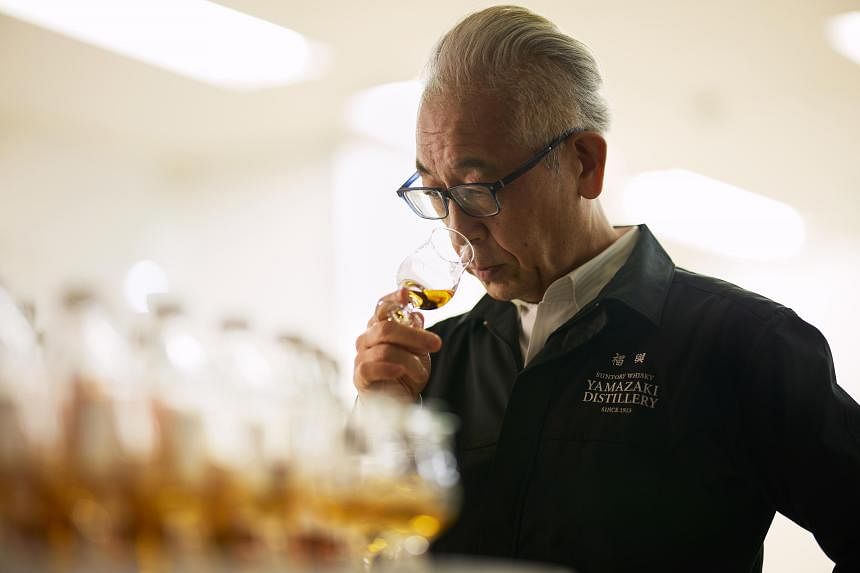SINGAPORE – Whisky fanatic Steven Yeoh remembers well the days, a decade ago, when he could purchase a bottle of Yamazaki 18 Years Old whisky for $200.
“Now, they cost $2,000 to $3,000 each,” says the 57-year-old co-founder of Rare Malts, a whisky boutique which specialises in Japanese whiskies.
The highly sought-after Japanese whisky has become a thing of legend. Acquiring a bottle at retail price is next to impossible, and on the secondary market, it can easily go for eye-watering five-figure sums – such as upwards of $19,000 for a bottle of Yamazaki 25 Years Old.
But the craze is not limited to Yamazaki, even if it is the most coveted and well-known iteration of Japan’s whisky offerings.
Hakushu, another whisky produced by Suntory – Yamazaki’s parent brand – also goes for big bucks on the resale market: at least $6,500 for a Hakushu 25 Years Old, on the lower end of the price range.
Rival whiskies produced by Suntory’s domestic beverage rivals – such as Nikka by Asahi and Fuji by Kirin – are also extolled liquids in their own right.
“You cannot even find popular Japanese whiskies in Japan today because demand is just so great,” says Mr Yeoh.
“I remember just before the Covid-19 pandemic, fights nearly broke out while patrons were queueing for Japanese whisky bottles at the Tokyo Bar show.”
The present-day fanfare is a stark contrast to 1929, when Suntory released the first Japanese whisky, Shirofuda White Label.
“It actually didn’t sell well because it was too smoky,” says Mr Shinji Fukuyo, the fifth-generation chief blender at Suntory.
Mr Masaki Morimoto, president of Suntory Spirits and Beam Suntory president in the Asia-Pacific, says: “When our founder Shinjiro Torii set out to make whisky, no one in Japan knew about it. He had to make the effort to establish the culture and demand around it.”
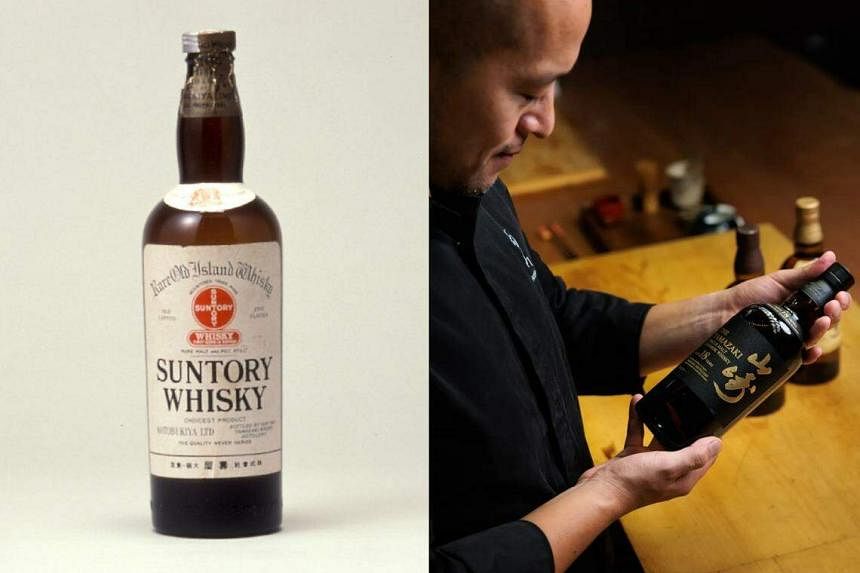
Unlike the pioneering Shirofuda White Label, Japanese whiskies are now famous for their robust aromas and nuanced tasting notes.
For instance, the now-legendary Yamazaki 18 Years Old has a redolent and buttery aroma, and bursts of cinnamon, berries and chocolate on the tongue that are finished off with a lingering hint of spice.
Complex flavour profiles like these are arguably a result of the Japanese principles of “kodawari”, the pursuit of perfection, and “kaizen”, continuous improvement – principles which have made “Japanese-made” a badge of honour for everything from cars to stationery.
“Japan’s master whisky blenders exude pride and passion when they talk about their creations, and their distilleries are not afraid to experiment,” says Mr Yeoh.
“The quest for perfection and finding the right formula resulted in Japanese whiskies winning awards in the early 2000s and finally being noticed globally,” he adds.
These awards include a gold medal in 2003 at industry competition International Spirits Challenge for Yamazaki 12 Years Old, a feat which was repeated by other Suntory whiskies such as Hakushu and Hibiki over the intervening years.
In 2015, the influential Jim Murray’s Whisky Bible guidebook declared Yamazaki Sherry Cask 2013 to be the Best Whisky In The World.
Mr Murray, an acclaimed whisky critic, praised the whisky’s “nose of exquisite boldness” and finish of “light, teasing spice”.
Suntory chief blender Fukuyo says such recognition lent credibility and respectability to its Japanese whiskies on a global stage.
“Winning international competitions meant that we developed a strong reputation among whisky lovers,” he adds.
The increasing shortfall of supply compared to demand, he says, has only boosted the mystique and interest around these golden-hued liquids.
Water, wood and whisky
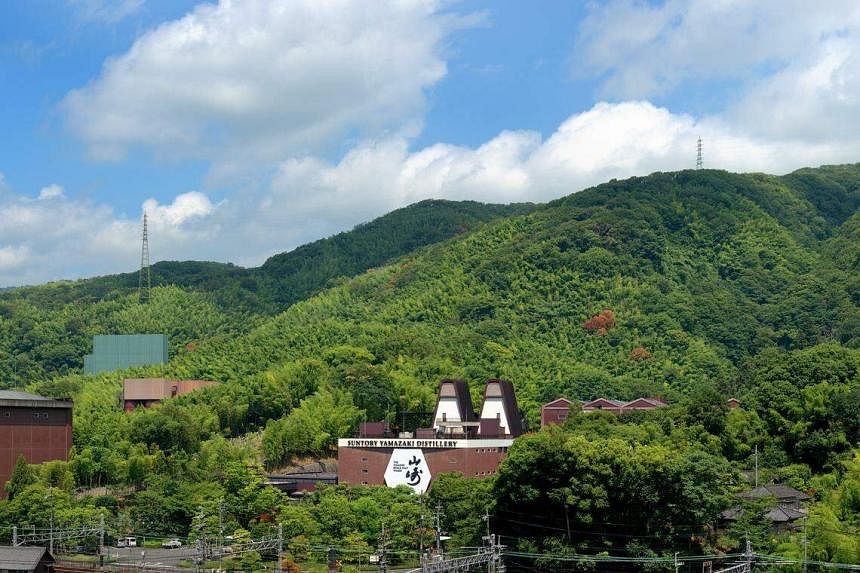
Exactly 100 years have passed since Suntory’s founder Torii built Japan’s first malt whisky distillery on the outskirts of Kyoto in 1923.
Today, that facility – known as the Yamazaki Distillery – still stands as the home of Suntory’s highly prized whiskies.
It is located in the sleepy town of Shimamato, which feels like it came straight out of travel and food TV show Japan Hour (2020 to present).
There are rolling hills, tall bamboo groves, an elegant Japanese shrine and even an excellent okonomiyaki (savoury pancake) restaurant.
The distillery is open for tours, but snagging a spot is as difficult as acquiring a bottle of Yamazaki at retail price. Tickets are infrequently available and often immediately booked up.
But, for those fortunate enough to gain entry, there are a few key details which stand out.
For instance, the water used by the distillery is some of Japan’s purest mineral water, as judged by Japan’s Ministry of the Environment.
It comes from the convergence of the Uji, Katsura and Kizu rivers into the Yodo River, just a stone’s throw from Yamazaki Distillery.
Additionally, there are 16 towering copper pot stills in varying shapes and sizes on the floor of the distillery.
Whisky distilleries around the world might typically have only one or two types of these to distil the malted grain into a base spirit.
But Yamazaki Distillery – and the other Japanese distilleries that followed in its footsteps – is unusual in using different permutations of these 16 unique stills to produce subtle differences in taste, such as a full-bodied versus smooth mouthfeel.
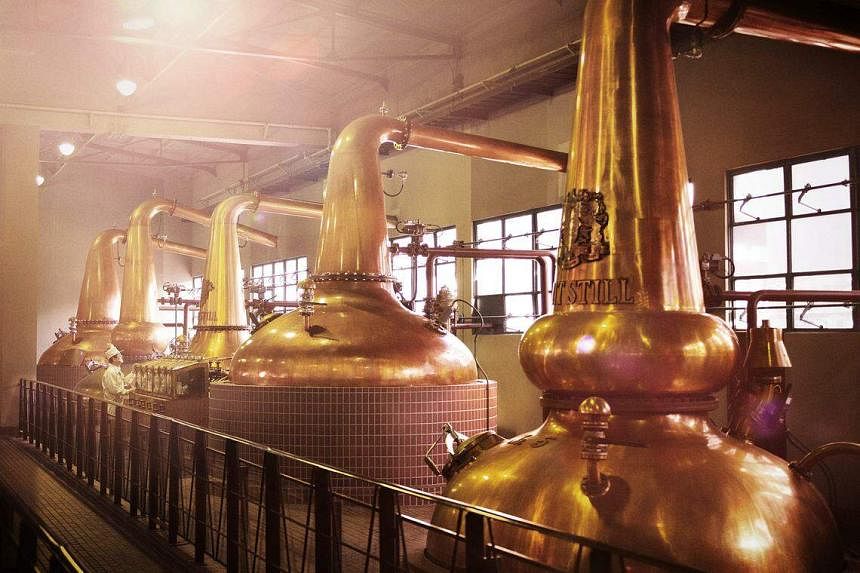
Another secret weapon is in the selective use of casks made from the rare Japanese mizunara oak to age some of the base spirit, which in turn bestows notes of sandalwood and incense in the liquid.
Other distilleries around the world have begun to explore using mizunara to age whiskies, but it was Suntory – and Yamazaki – that pioneered the use of this Hokkaido-native oak.
These casks are a precious commodity, as it reportedly takes around 200 years before a Japanese mizunara oak tree can be cut down for use in the ageing of whisky.
The commemorative Yamazaki 18 Years Mizunara 100th Anniversary Edition ($7,425), released in 2023 to mark the centenary of Suntory’s whisky-making aspirations, was aged purely in mizunara casks. Only 2,000 bottles were produced.
Despite cask limitations – and other complications such as climate change and inflation – the Yamazaki Distillery has been running at full capacity for some 10 years now, as Mr Morimoto takes pains to point out.
“As we look to the next 100 years, we’ve made great effort to improve our production and meet the demand, though maintaining product quality is still our top priority,” he says.
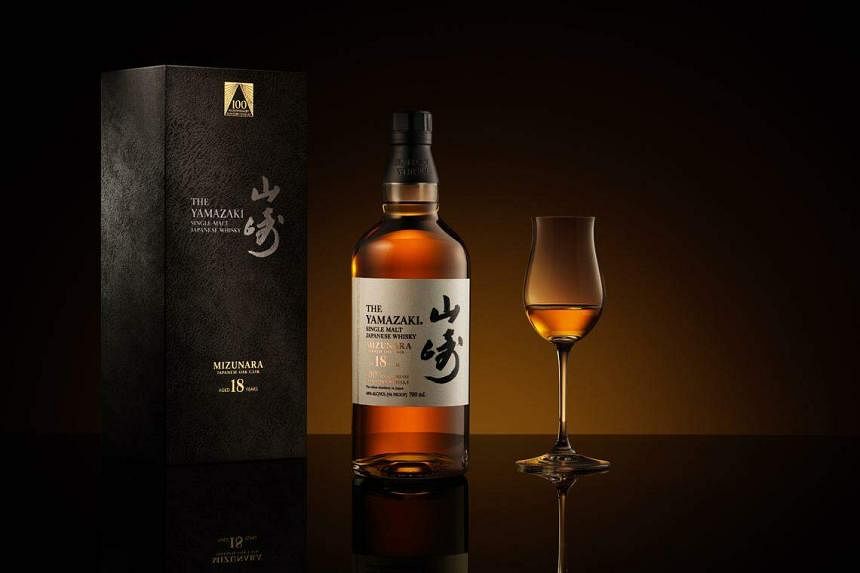
Suntory announced in May an investment of 10 billion yen (S$90.39 million) into Yamazaki Distillery and its sister facility, Hakushu Distillery in Yamanashi prefecture.
But chief blender Fukuyo concedes that there are still strides to be made in terms of ramping up production.
“Scotland has much higher capacity than Japan, and we are still learning from the Scotch whisky industry in that respect.
“It’s interesting how they have been able to support one another through liquid exchange, and maybe Japanese whisky can eventually get to that point,” he says, referring to distilleries in Scotland sharing and exchanging liquids to make blends.
Looking beyond Yamazaki
For the time being, Suntory is focusing on other ways to get its whiskies into the hands of consumers, beyond the ultra-premium labels of Yamazaki and Hakushu.
There is, for instance, the Hibiki Japanese Harmony range, which blends malt whiskies from the Yamazaki and Hakushu distilleries, along with grain whisky from the Chita distillery in Aichi prefecture.
It is technically part of Suntory’s premium offerings, but many local liquor specialists have listings for bottles of Hibiki Harmony ranging from $170 to $250.
Suntory’s Kakubin whisky, first produced in 1937, remains an affordable product, with a 700ml bottle retailing for around $60 in Singapore.
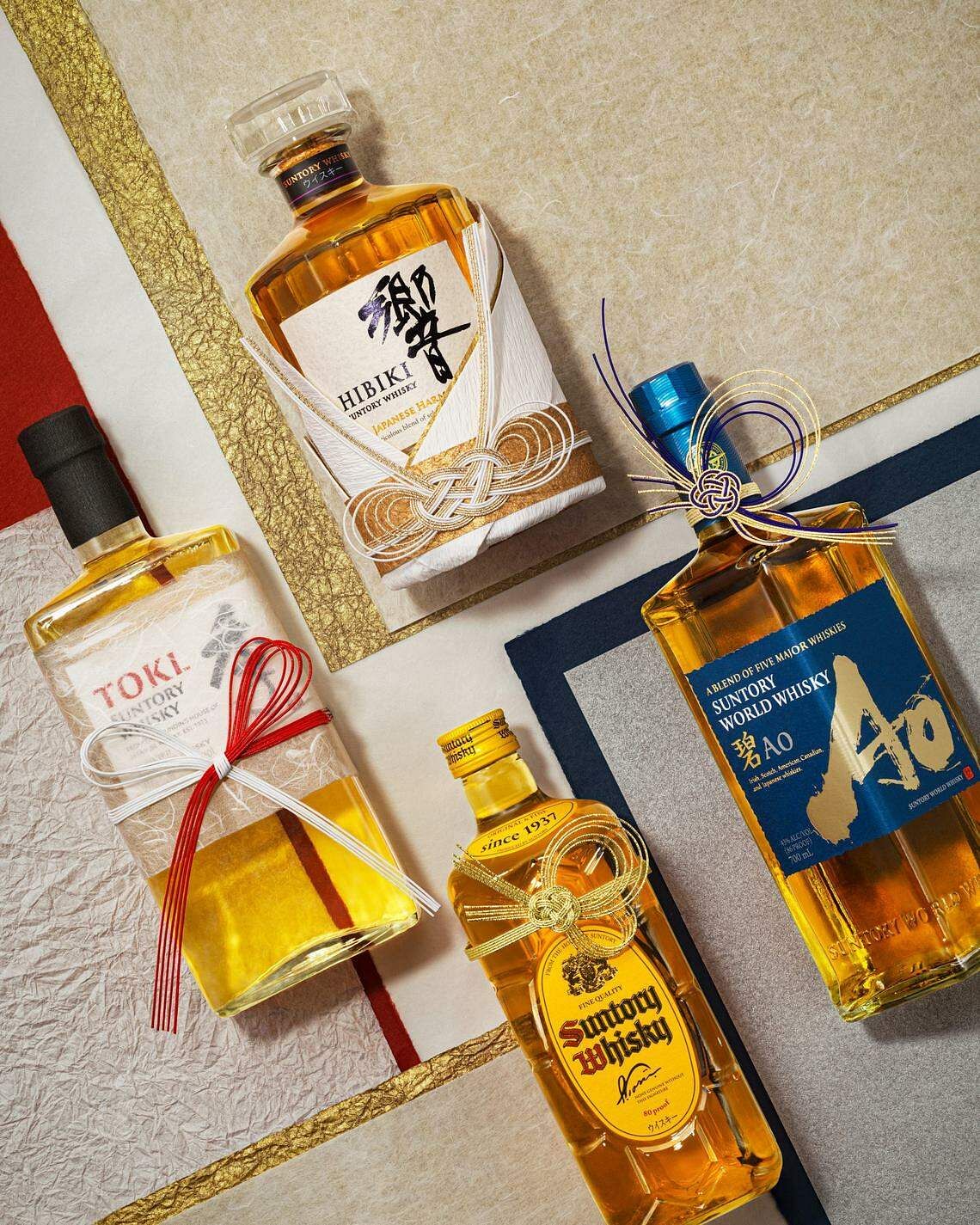
Made from bourbon cask whiskies aged at the Hakushu and Yamazaki distilleries, it was also the best-selling Japanese whisky in the world in 2022, with 6.1 million cases sold, according to a report by trade publication The Spirits Business.
Kakubin holds a light, malty flavour that lends itself well to cocktails – especially the highball, a popular drink in Japan.
Typically, a whisky highball mixes whisky and soda water in a 1:2 or 1:3 ratio, with a spritz of lemon added for a refreshing twist.
The addition of soda water makes for a drink that is less alcoholic by volume, and thus lighter.
The Kakubin highball is so popular in Japan that Suntory now even produces a canned version of it, which can be purchased at the konbini, the convenience stores so ubiquitous in Japanese cities.
If you manage to book a tour at the Yamazaki Distillery, you will have the opportunity to enjoy a whisky highball using soda water made from the area’s famously soft water during a tasting session at the very end.
A guide tells this reporter during the tasting that the addition of soda water enhances the flavour and character of the whisky.
Mr Morimoto says that he favoured a Kakubin highball when he was a student, while chief blender Fukuyo adds that his drink of choice is a Japanese whisky highball using Torys, another Suntory whisky which is available from some parallel importers in Singapore, such as Century Wines & Spirits ($69 for a 700ml bottle).
More importantly, the Japanese whisky highball is a perfect accompaniment to food – which is perhaps why it has become the staple drink of the Japanese pub known as the izakaya.
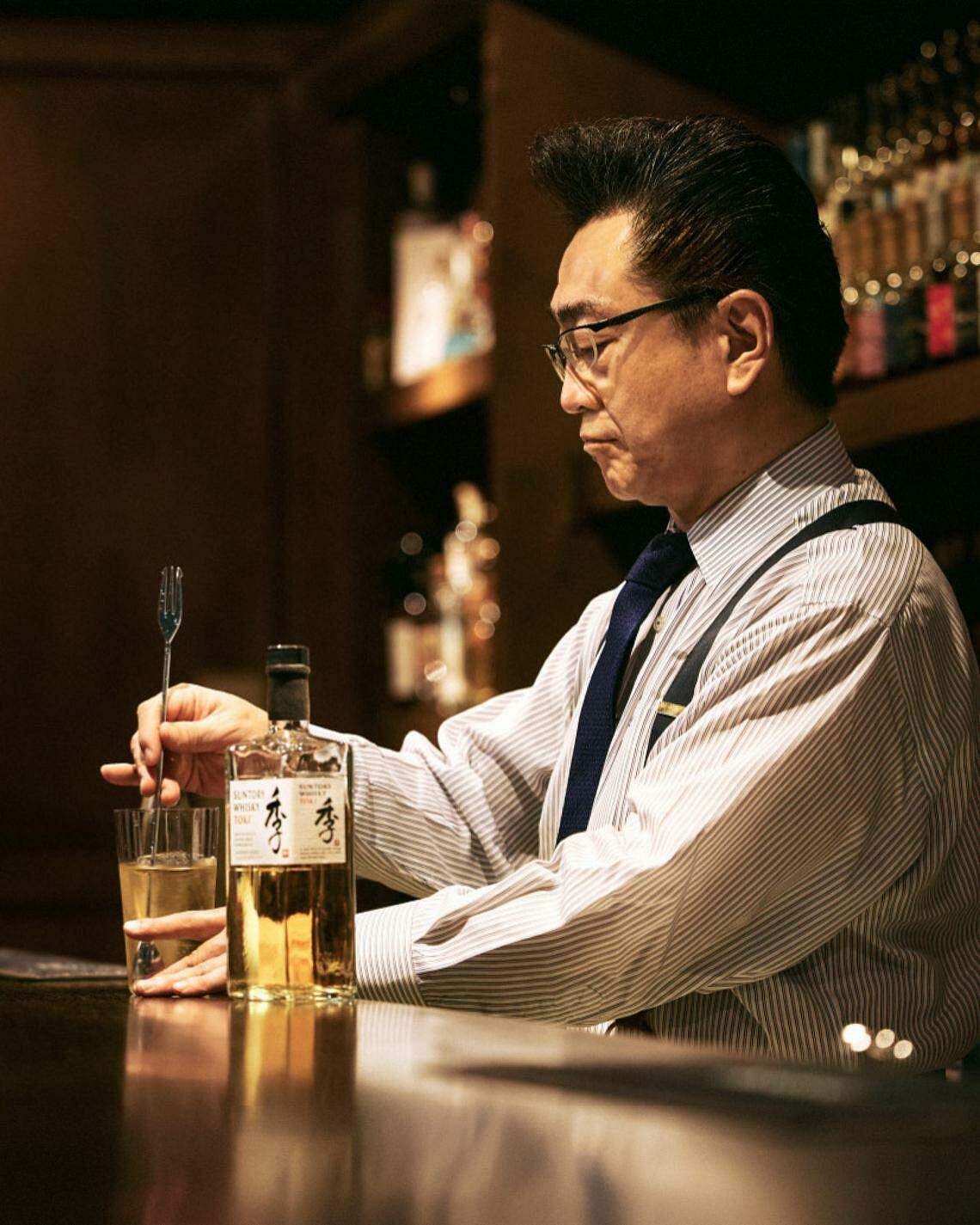
Here in Singapore, Neon Pigeon, a popular izakaya in Carpenter Street, serves an interesting twist on the highball with its High On Saoco drink ($22), which blends Suntory Kakubin with coconut soda, pineapple rum and red rice vinegar.
It can be enjoyed with a variety of bar bites, including wagyu sliders and duck gyoza.
Jigger & Pony at Amara Hotel offers the intriguing Super Lemon Highball ($28++). In this beverage, “super soft” water from Hokkaido – which has a low mineral content that gives it a rounded flavour and texture – is blended with specially extracted lemon water and Suntory’s newest whisky product, Suntory World Whisky Ao.
Ao blends whiskies from the five major places that Suntory owns distilleries in: Japan, Scotland, the United States, Ireland and Canada.
As Mr Morimoto explains: “Ao shows off all of these distilleries within one blend. It’s another way that we are trying to get Japanese whisky into people’s hands – especially younger people in Japan as well as in South-east Asia.
“And it shows just what could be possible in Suntory’s next 100 years of pushing the whisky frontier.”
